
One of the nice things about birding at Kaeng Krachan is that there are several hides, some of which are listed as eBird hotspots. After a day of walking around, it can be nice to just sit in a hide for half a day and let the birds come to you, particularly if you enjoy bird photography. One of my regular correspondents complained that the hides do not offer good backgrounds for nice photos (I sometimes suspect he is much more interested in the background than in the actual birds), but they do attract some species that would be hard to see so closely elsewhere.
One of these hides has the somewhat off-putting name “Mr. Bird’s hide”, but it is frequently mentioned as the best among the three that were in action when I was there in July (the eBird link above shows the species seen at this hide). Its main attractions – at least in July – are probably the pheasants and partridges.
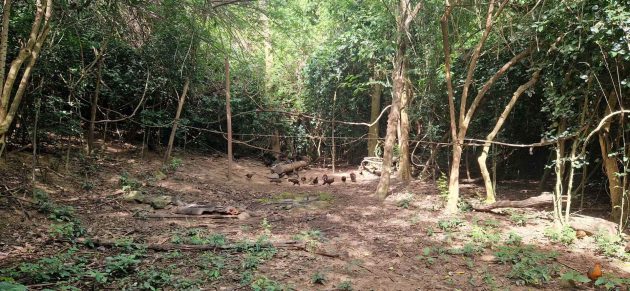
The easiest one to see – practically present all the time while I was there – was the Red Junglefowl. And yes, this is both the ancestor of our domesticated chicken and a proper member of the pheasant family.
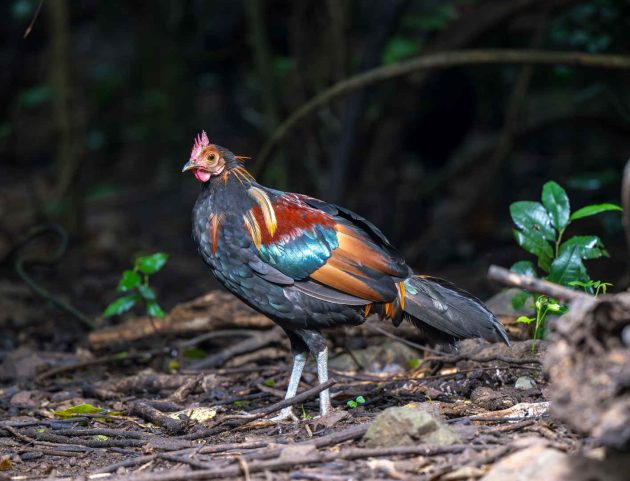
It apparently is very common in Thailand, “despite relentless persecution” (HBW).
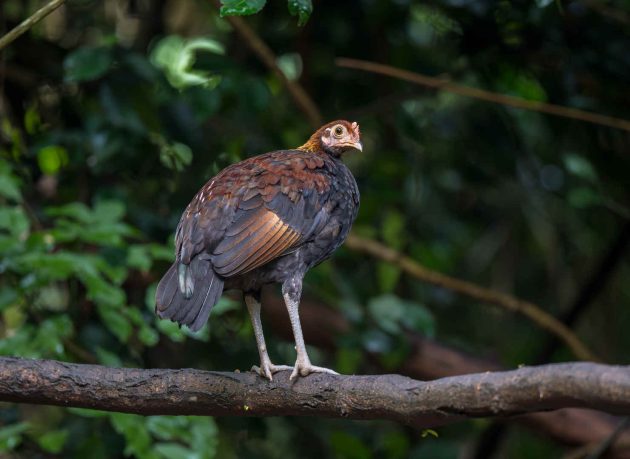
On another occasion, I asked one of the guides associated with the Baan Maka Lodge about the junglefowl and hybridization. According to her, there is not much of that as the local farmers do not keep chickens. She pointed out that the junglefowl are substantially smaller than the domesticated variety.
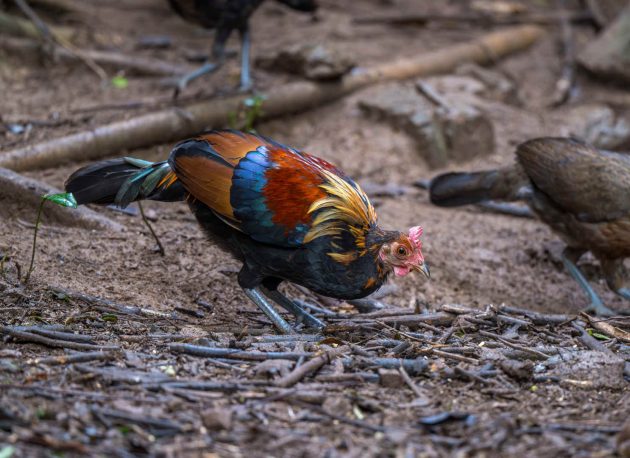
The Kalij Pheasant is much more impressive.
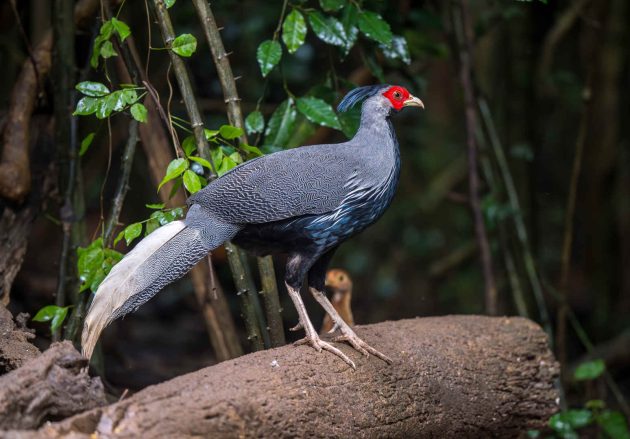
The colorblind scientist who named it chose the name Lophura leucomelanos, indicating a black-and-white bird and thus conveniently ignoring the fact that it is mainly a blue-and-white bird.
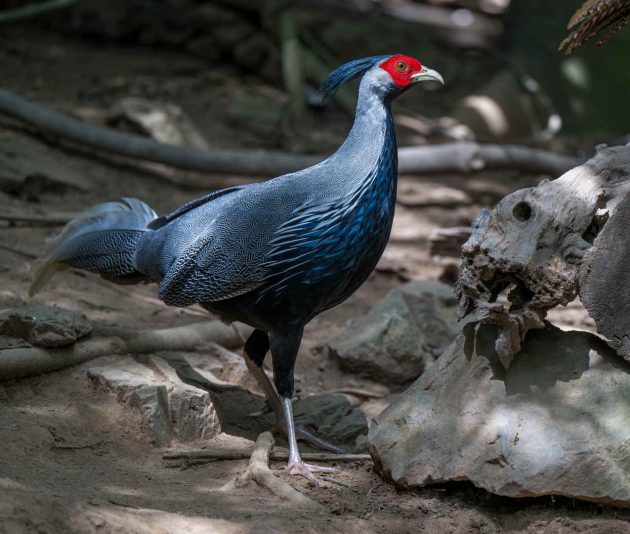
At least the male bird – the female is more into brown, a strange choice given that brown is perhaps the ugliest color known to mankind (if such a remark does not result in any comments, then I give up).
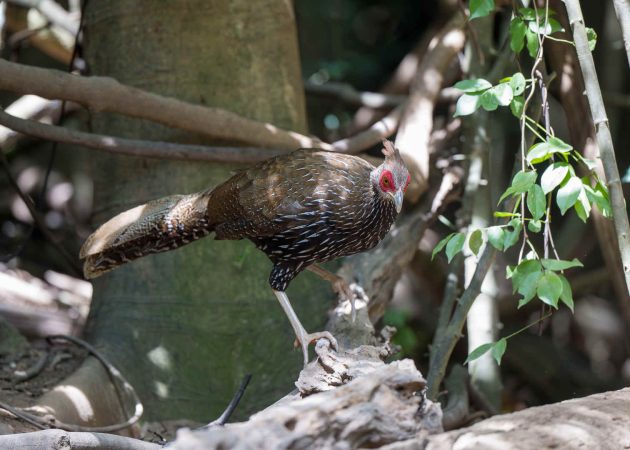
It also seems to be quite a bit into sunbathing, making it look somewhat awkward.
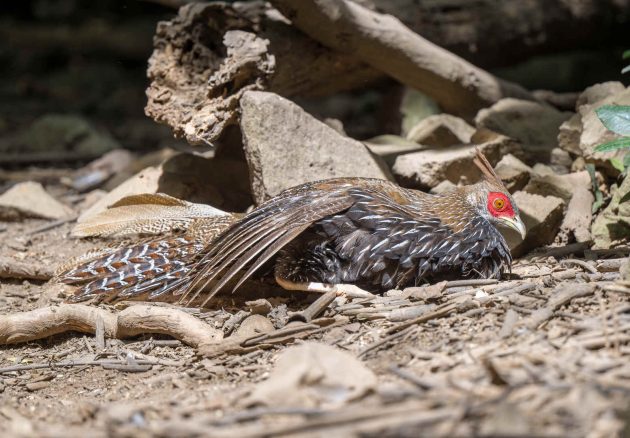
While the species is classified as Least Concern, there are threats – one study in particular highlights habitat degradation and illegal hunting.
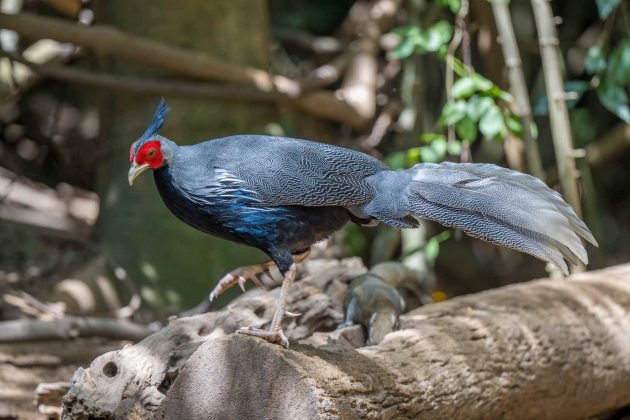
And as usual, some ornithologists who would rather spend time in Hawaii than in stuffy and humid Southeast Asia prepare Ph.D. theses on the species on that island, even though it is only an introduced species there.
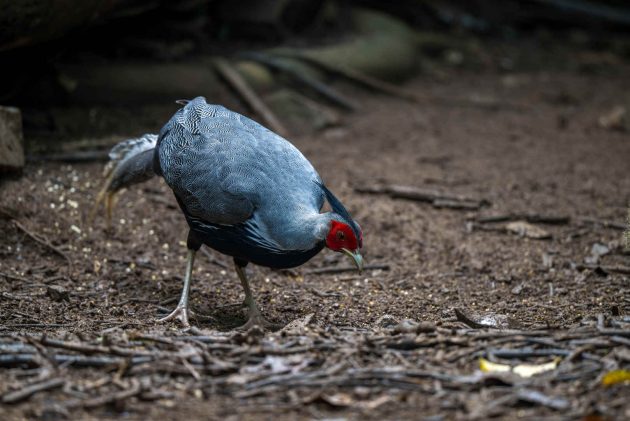
Moving away a bit from true pheasants, the hide also offered a view of a female Grey Peacock-pheasant.
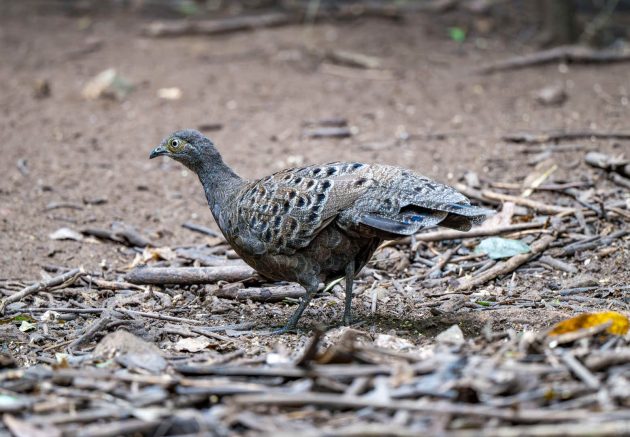
These Peacock-pheasants are more closely related to pheasants than to peacocks – the similarities with peacocks (e.g., the eye-spots) are the result of convergent evolution (apparently, many species find such eyes sexy).
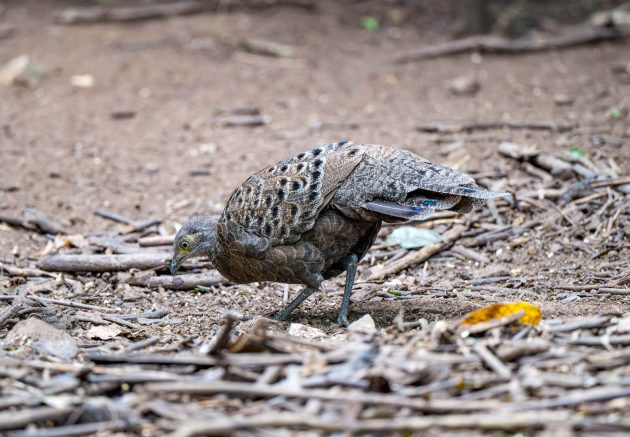
While partridges are still somewhat related to true pheasants, they are more distantly related to them than the peacock-pheasants (think of the far-away tables at a huge family meeting that you have been dreading to attend. Well, maybe that is just me). Anyway, while I was there, the hide offered three partridge species.
I liked the Ferruginous Partridge best.
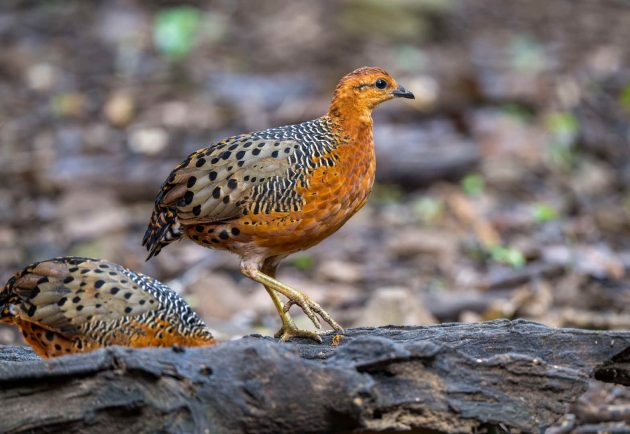
With a bit of imagination, you can see the many eyes on its plumage – the oculeus in its scientific name, Caloperdix oculeus.
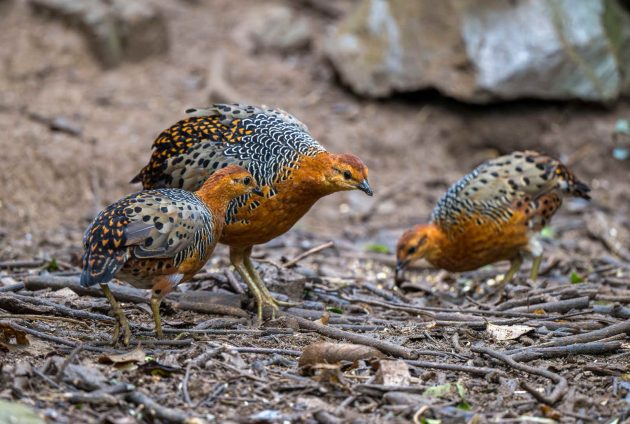
It is listed as Near Threatened – in Thailand, it is very scarce and overhunted.
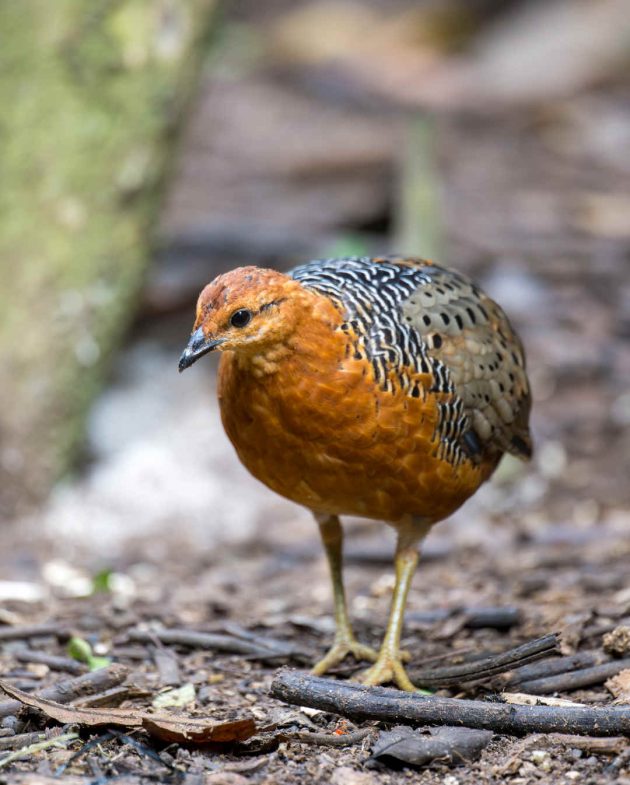
Its chicks look rather cute, too.
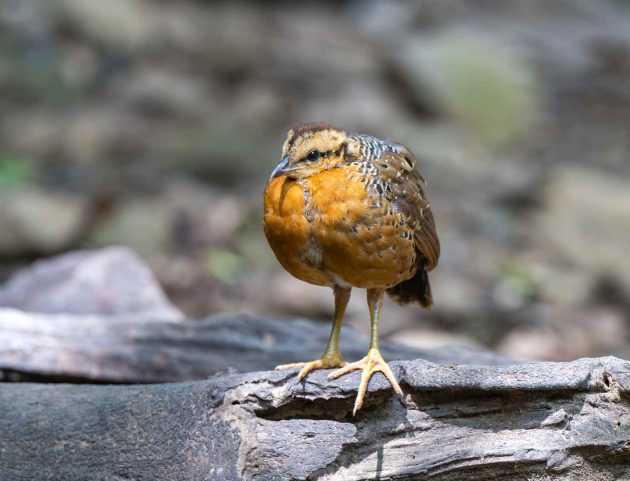
Fitting well into a tradition of ill-advised bird names, the Green-legged Partridge is not particularly green-legged.
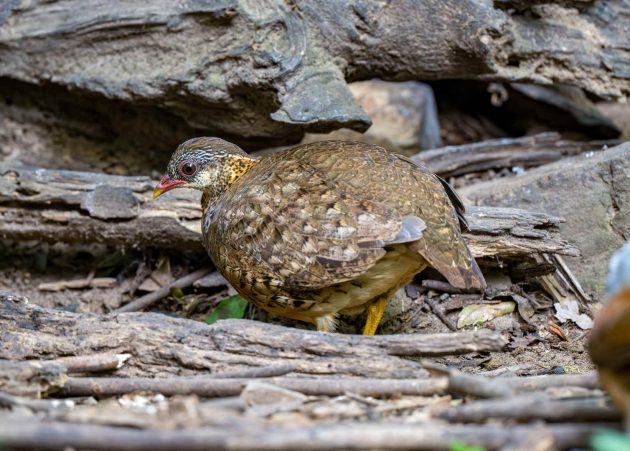
Indeed, the HBW profile calls the legs greenish-yellow. And while the profile is indeed titled “Green-legged Partridge“, in the text, the name used is Scaly-breasted Partridge (which is a bit weird and confusing, if you ask me, but of course, the HBW did not).
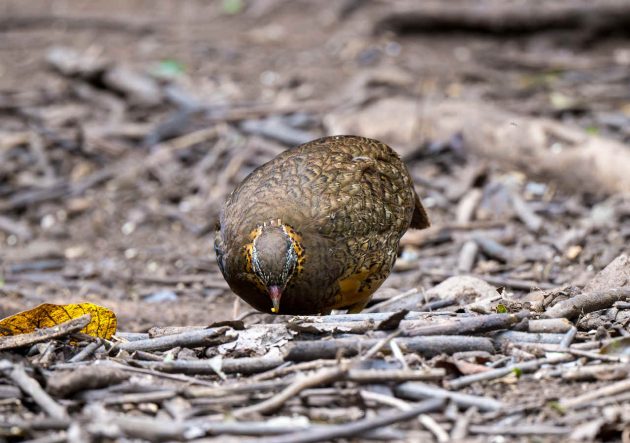
The scientific name Tropicoperdix chloropus also refers to the greenish feet (chloropus – there is a chemical element hidden there, chlorine, a greenish gas). It also indicates that it is a tropical (Tropico) partridge (perdix), though the combination sounds more like some overpriced energy drink.
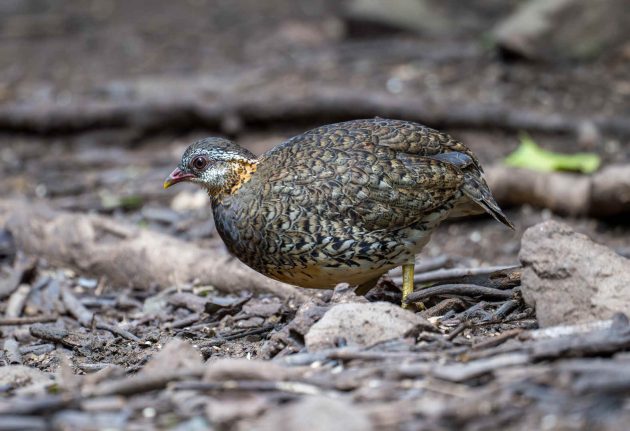
Like me, this partridge is probably not fond of macaques – they are among the main nest predators (source).
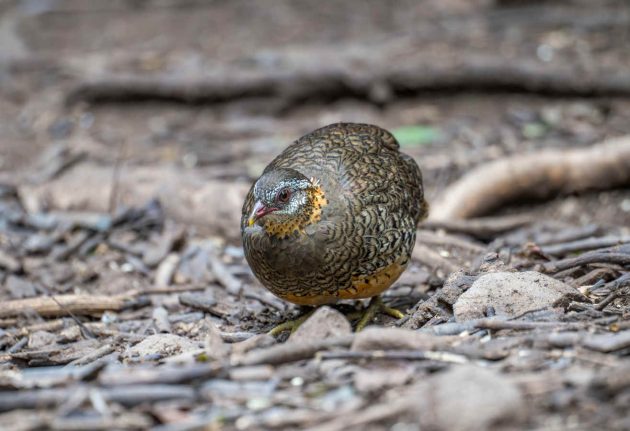
Finally, there is the Bar-backed Partridge. The scientists who named it did not think of it as bar-backed but as brown-breasted, as indicated by its scientific name Arborophila brunneopectus.
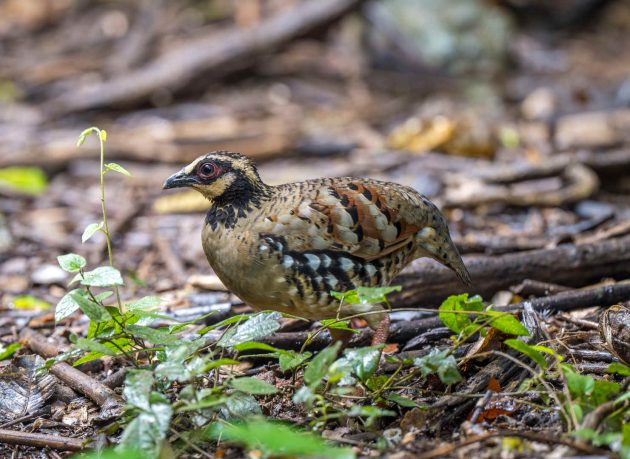
In the scientific literature, it shows up as a victim of hunting, in a paper titled “Perceived entertainment and recreational value motivate illegal hunting in Southwest China“. The key finding of the paper is that the main driver of hunters is the enjoyment of hunting rather than economic motives.
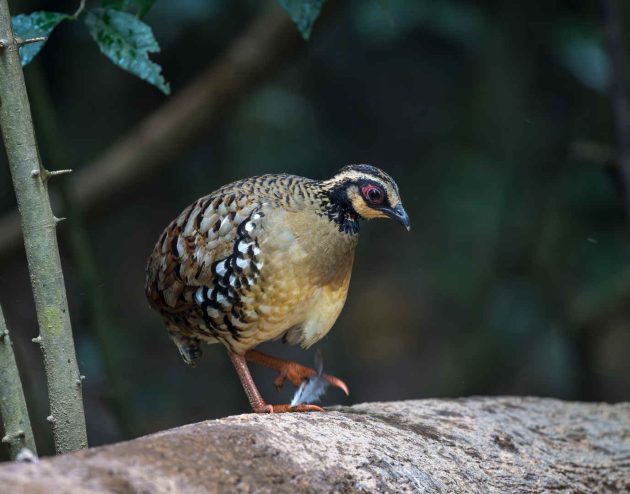
There is a song by a German band, “Die Ärzte”, titled “Schrei nach Liebe” (“Cry for Love”), presumably about dealing with neonazis. Parts of the lyrics go like this (machine translation from English):
“Your violence is just a silent cry for love.
Your combat boots yearn for tenderness.
You never learned to articulate yourself.
And your parents never had time for you.
(Ohoho) Asshole!”
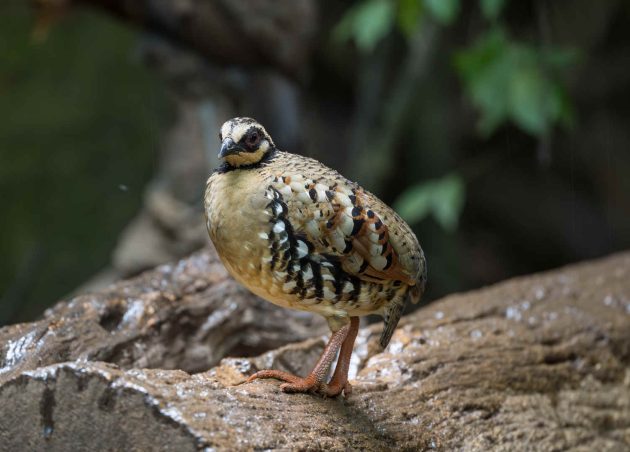
The second interesting bird family present at the hide is that of the woodpeckers.
It seems many of them come in pairs, one a smaller size and one a larger size. Of one of these pairs, the hide only had the Greater Yellownape.
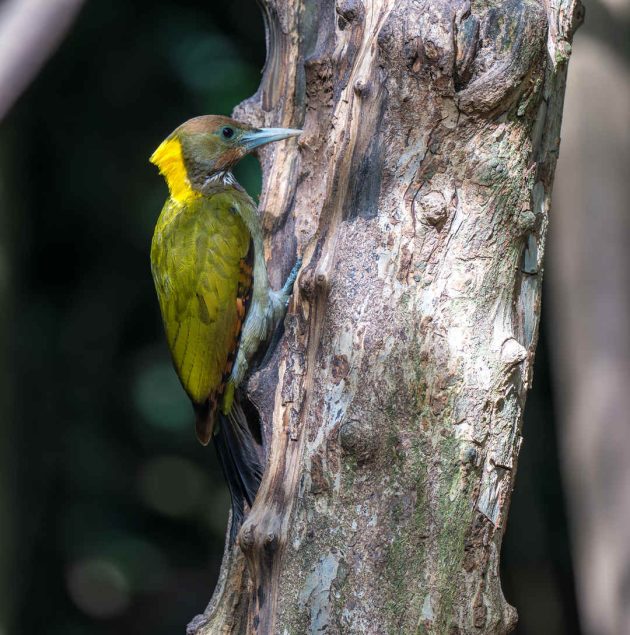
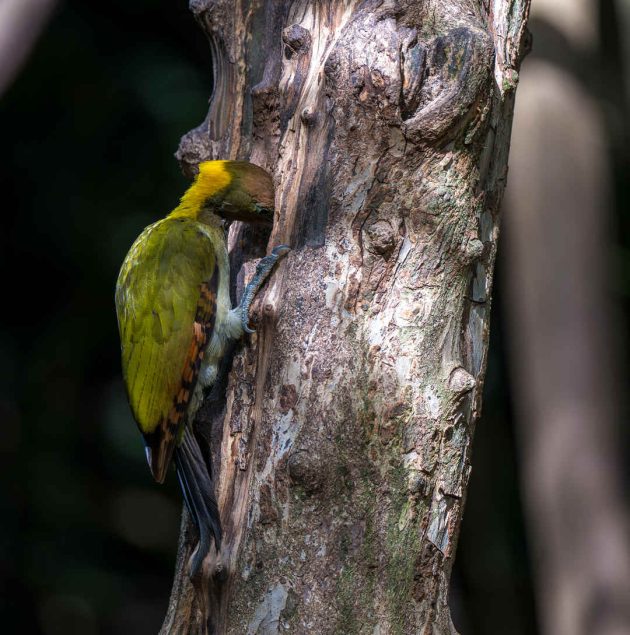
The profiles of birds on the HBW now all start with the same sentence – in the case of the Greater Yellownape, this one: “This account summarizes the life history of the Greater Yellownape, including information relating to its identification, systematics, distribution, habitat, diet, vocalizations, breeding ecology, and conservation status.” This is a welcome change – previously, I often accidentally reached the HBW page looking for something completely unrelated (say, a pasta recipe or investment advice) and read halfway through one of the profiles before realizing I was on the wrong page. No more.
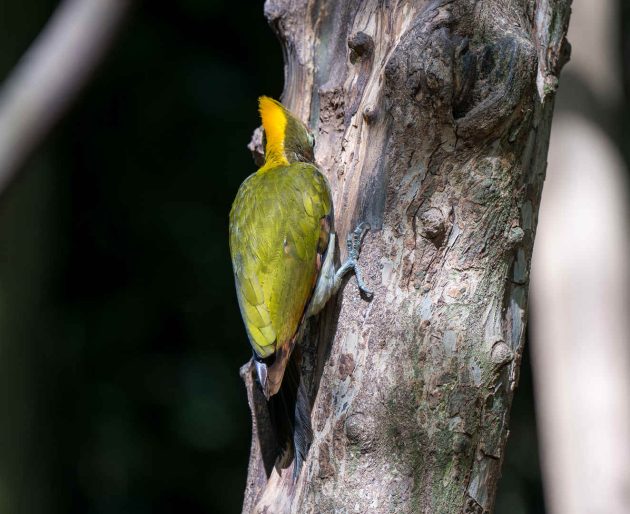
There is not that much scientific information on the species. It is, however, known for its somewhat flawed personality – apparently, it spends a lot of time making fun of another species, the Lesser Yellownape, even though eBird only describes it as a “medium-sized woodpecker”, not a great one.
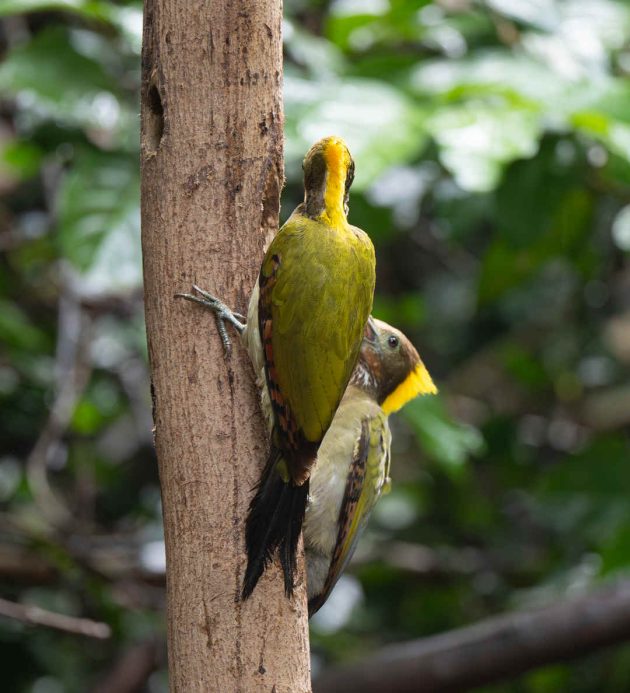
The other pair was completely present: Common Flameback …
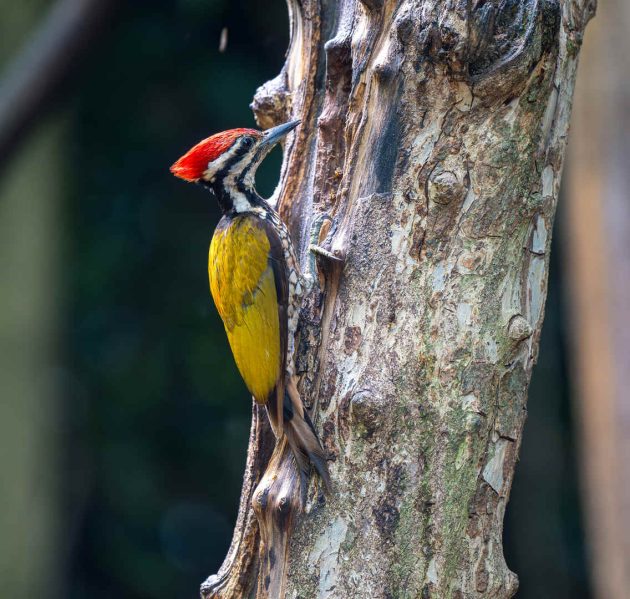
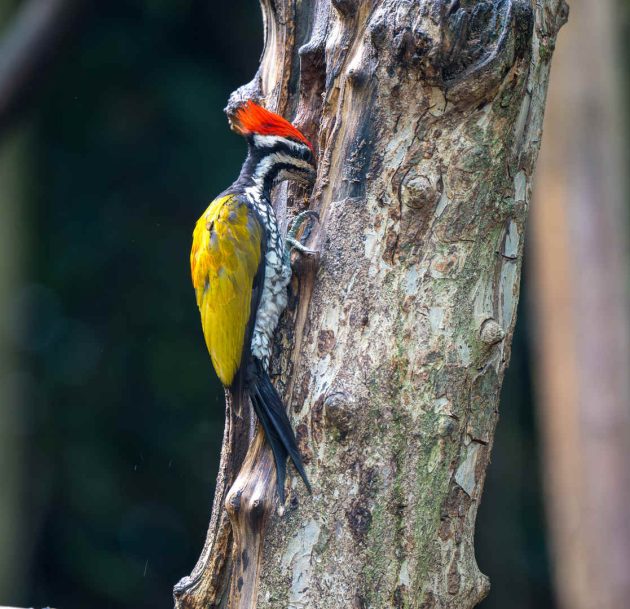
… (which according to one paper is the rarer of the pair in Thailand, restricted to a narrower range of habitat) …
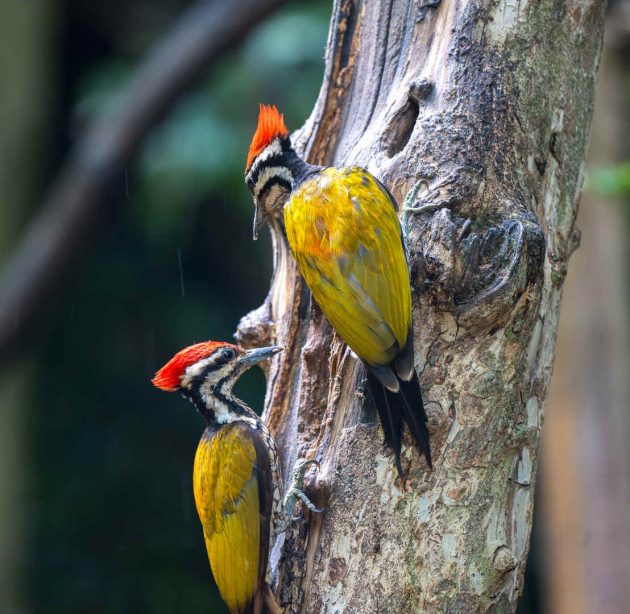
… and Greater Flameback.
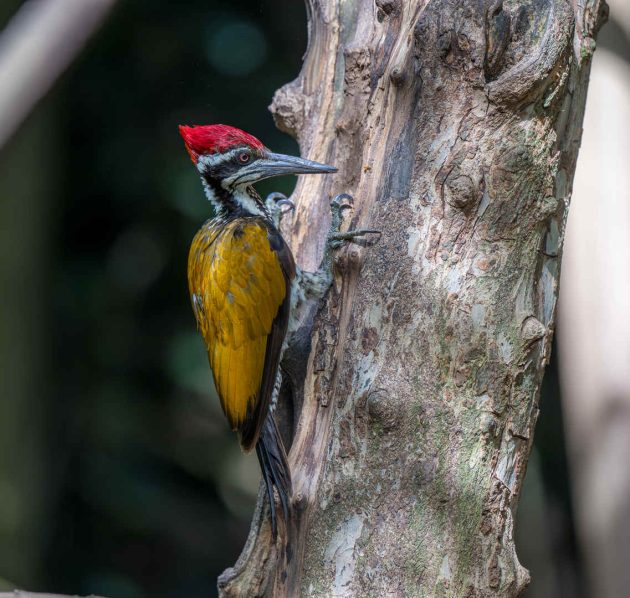
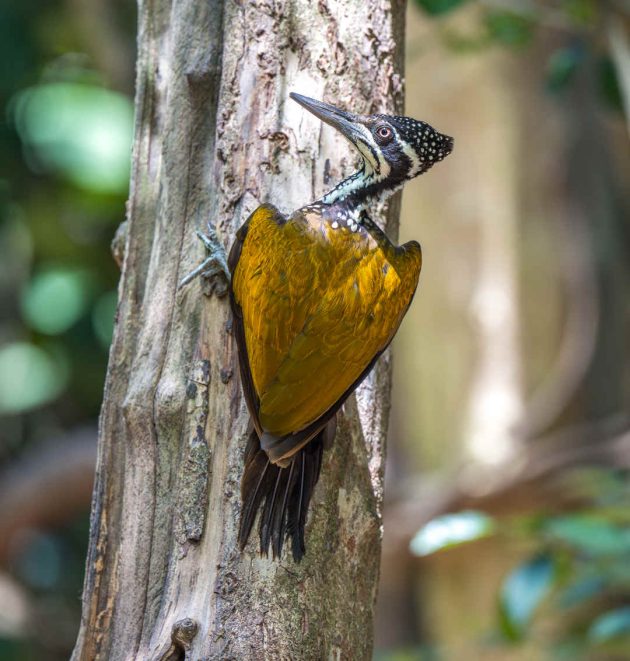
Interestingly, while both look very similar, they are only relatively distantly related, as this family tree shows.

Both are in the same family and subfamily, but the Greater Flameback clearly is in a tribe (“Megapicini”) that is much more adept at marketing.
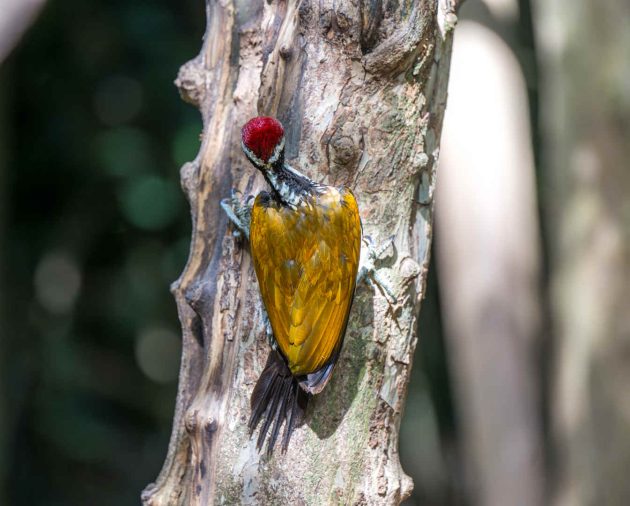
So, the close resemblance is likely the result of convergent evolution, though evolution agreeing on such an outrageous design coming from two different directions seems almost as unlikely as postulating a god with a very weird taste.
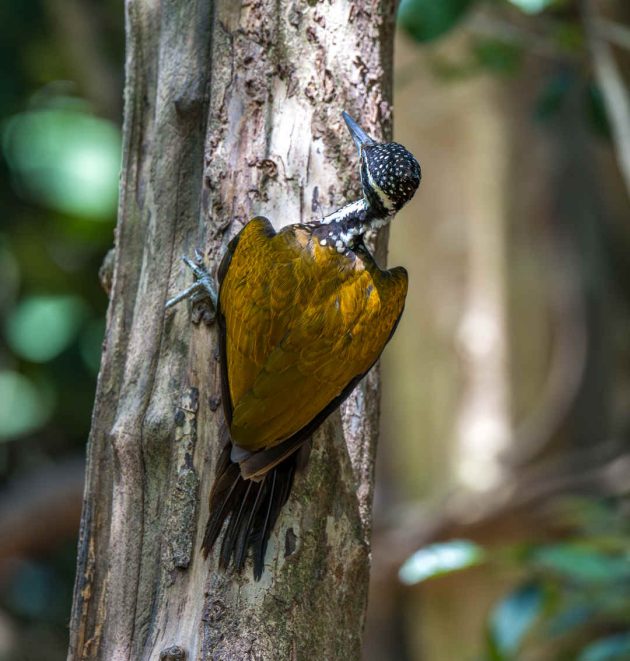
The third distinct group of birds at the hide is that of the laughingthrushes. And there is a similar story here. The resemblance between the Lesser Necklaced Laughingthrush and the Greater Necklaced Laughingthrush is not due to a very close relationship. They do not share the same genus.
According to the HBW, the necklace of the Greater Necklaced Laughingthrush is “often bolder”, but actually, among the birds in this hide, I found this not to be a good way to distinguish between the two. You judge for yourself – left hand side always is Lesser, right hand side is Greater LT (I think).
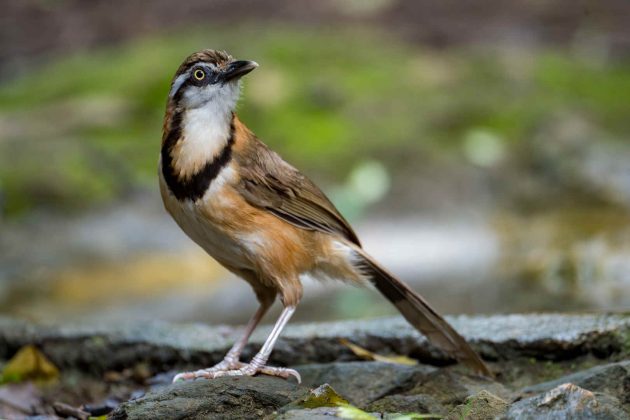
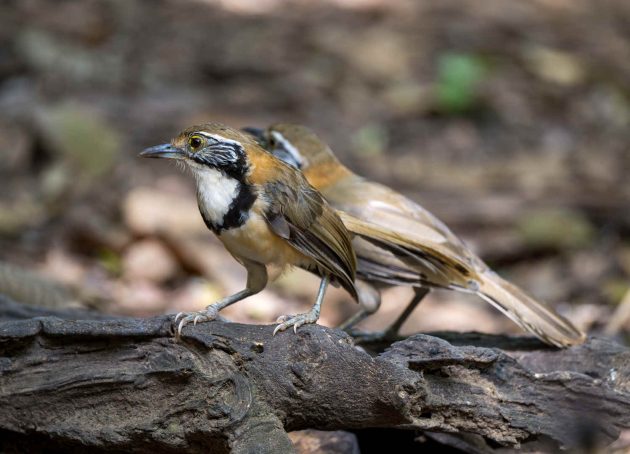
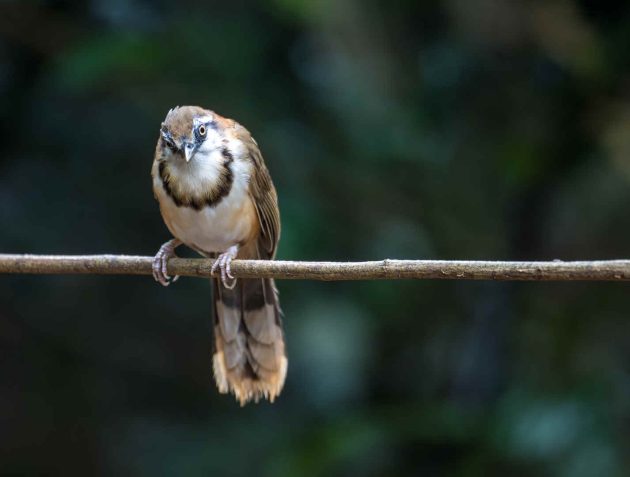
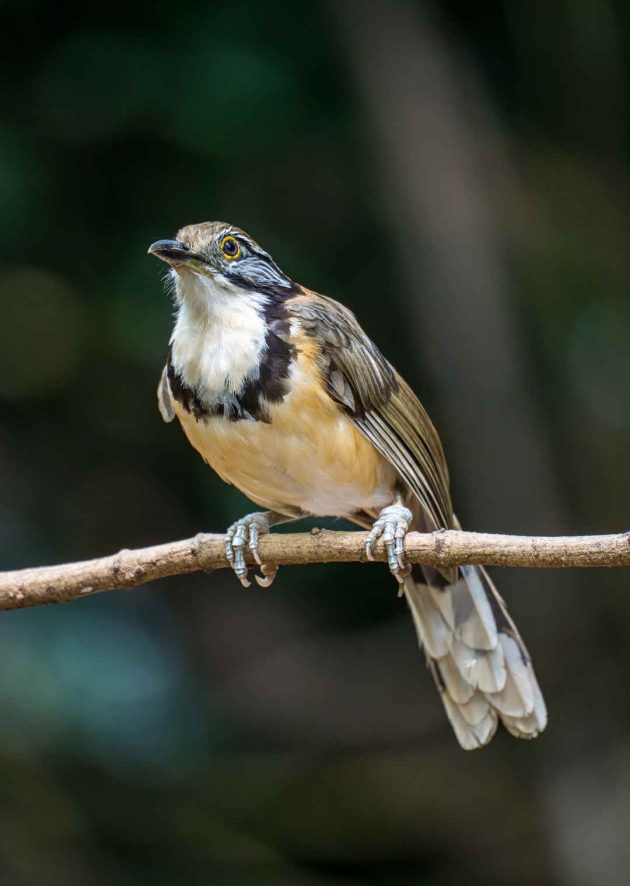
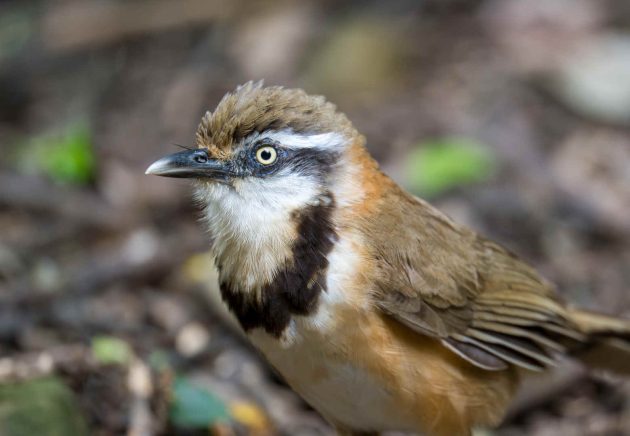
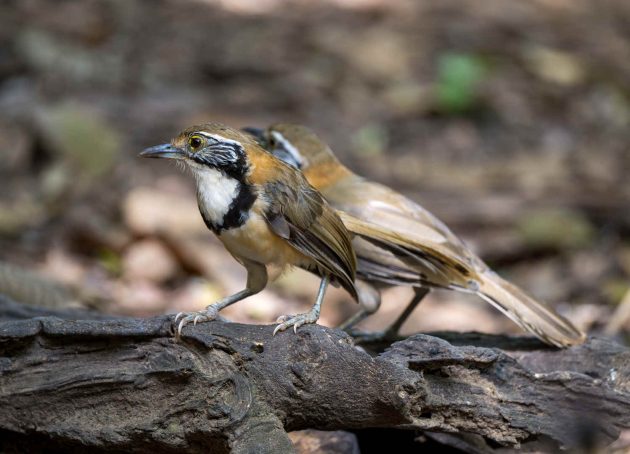
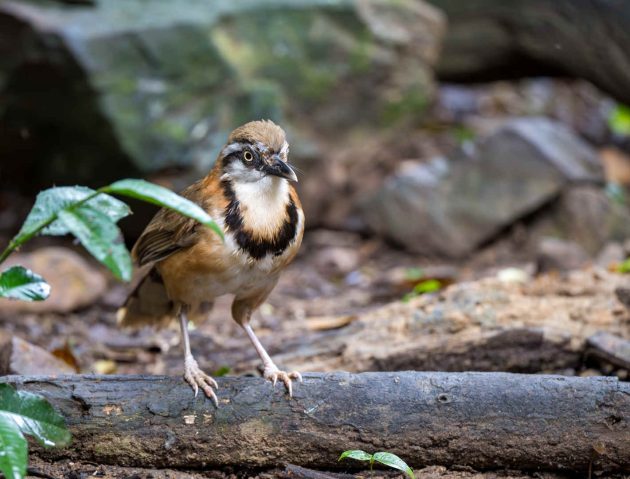
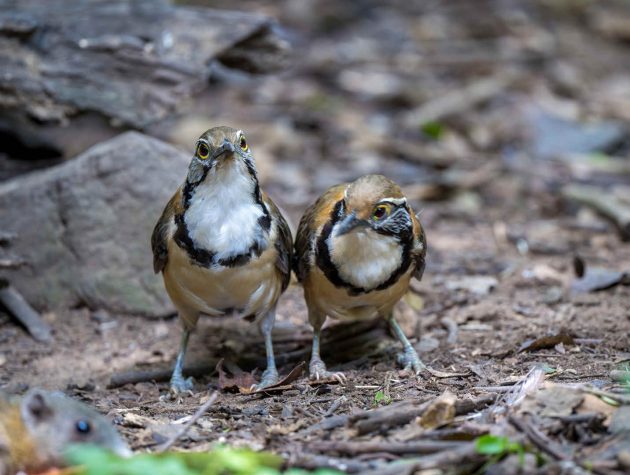
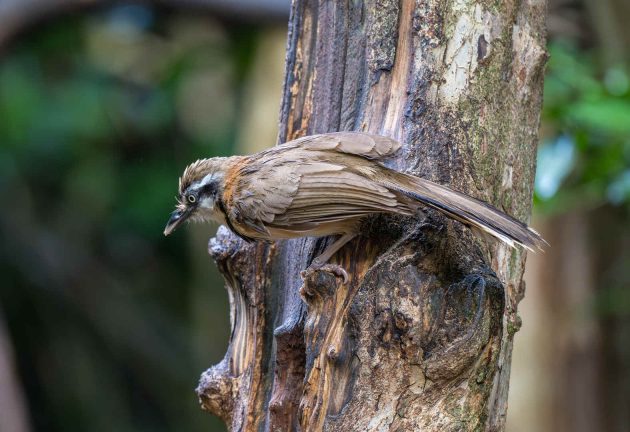
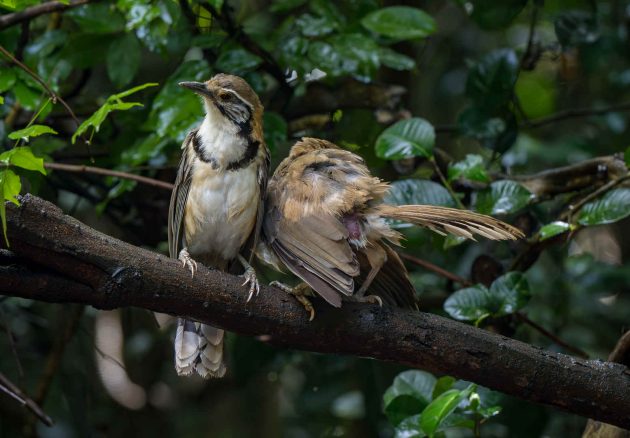
So, despite these two looking quite similar, the White-crested Laughingthrush is more closely related to the Lesser Laughingthrush than the two necklaced ones are to each other – the White-crested and the Lesser Necklaced Laughingthrush share the same genus (Garrulax), kind of the equivalent of human last names.
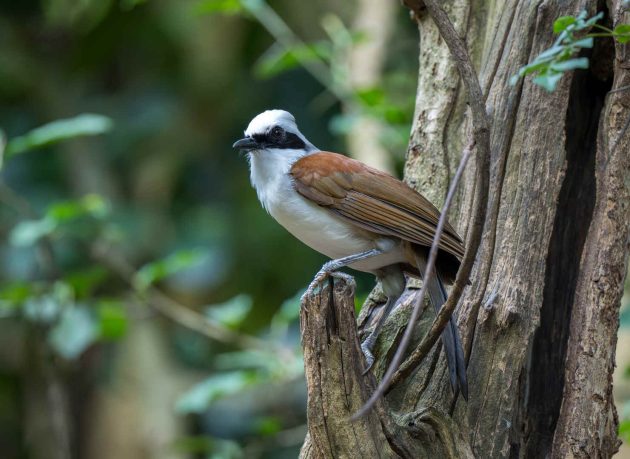
White-crested Laughingthrushes are cooperative breeders (source) …
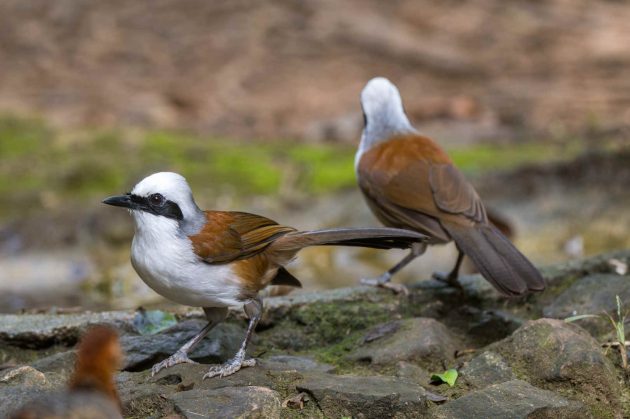
… and when breeding in aviaries, it may help to provide supplemental food to the nestlings to imitate the presence of helpers (source).
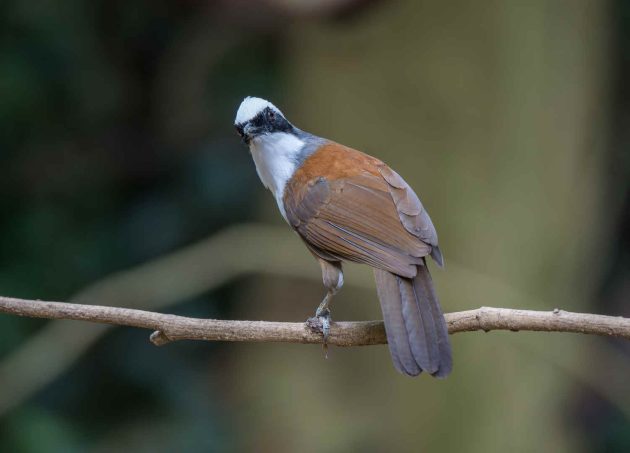
The species also suffers from capture for the bird trade (source) …
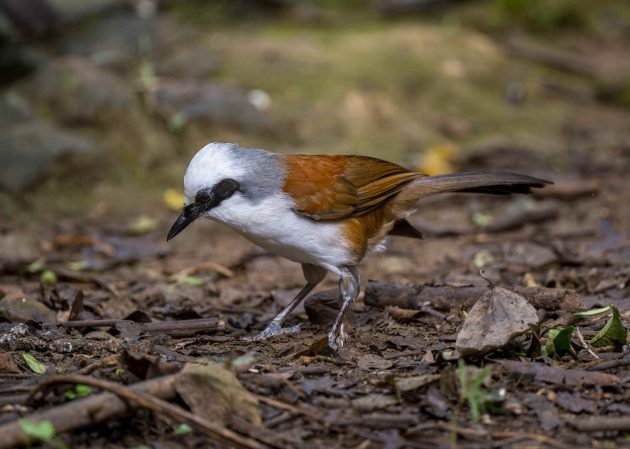
… and presumably as a consequence, there is a feral population in Singapore (source).
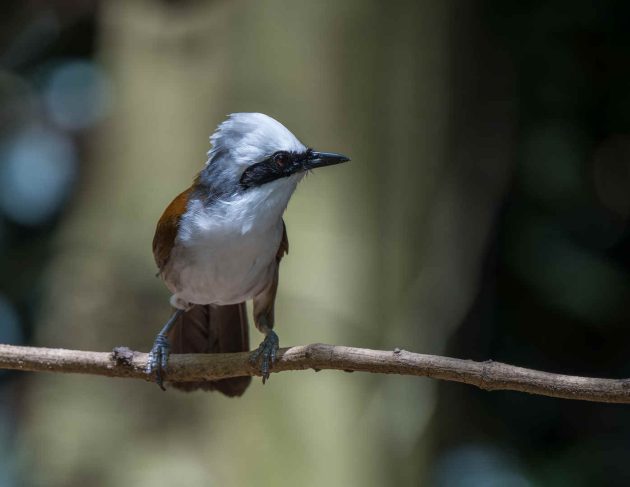
A few other bird species do not fall into the three groups mentioned so far, such as the Streak-eared Bulbul …
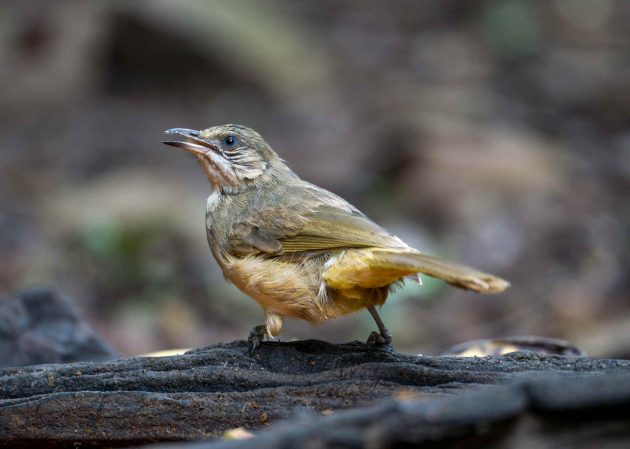
… Indochinese Blue Flycatcher …
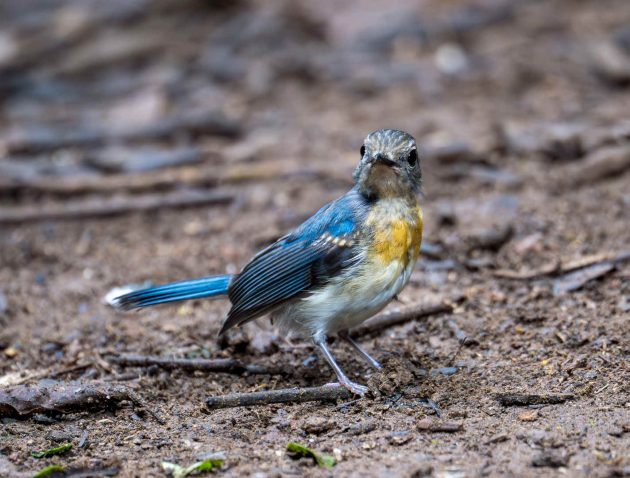
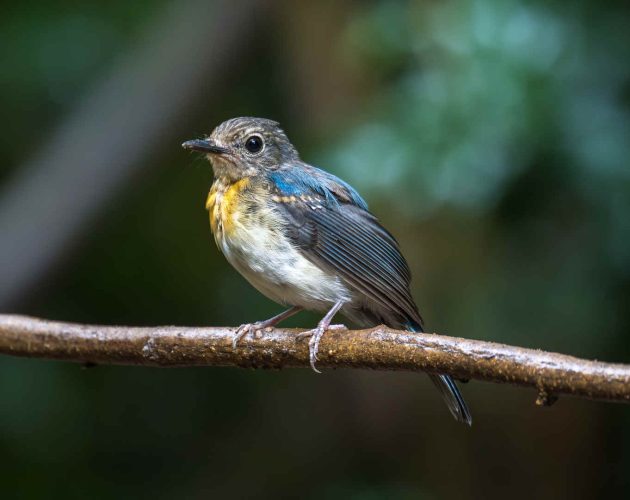
… and Racket-tailed Treepie.
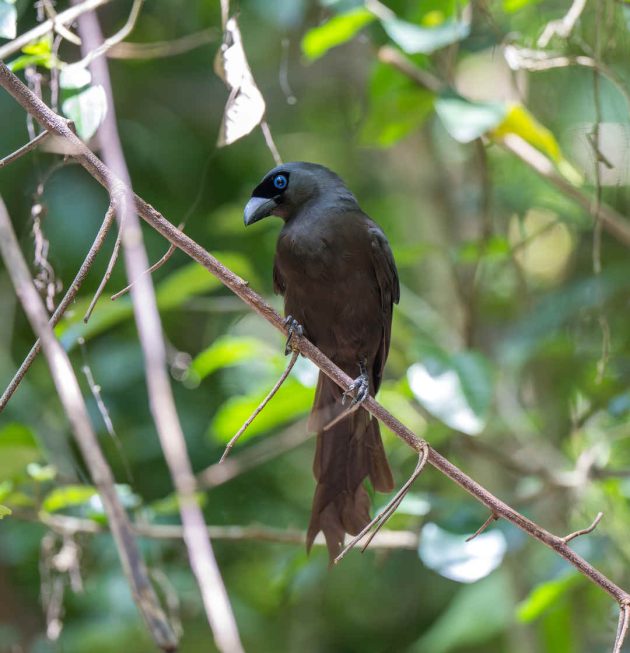
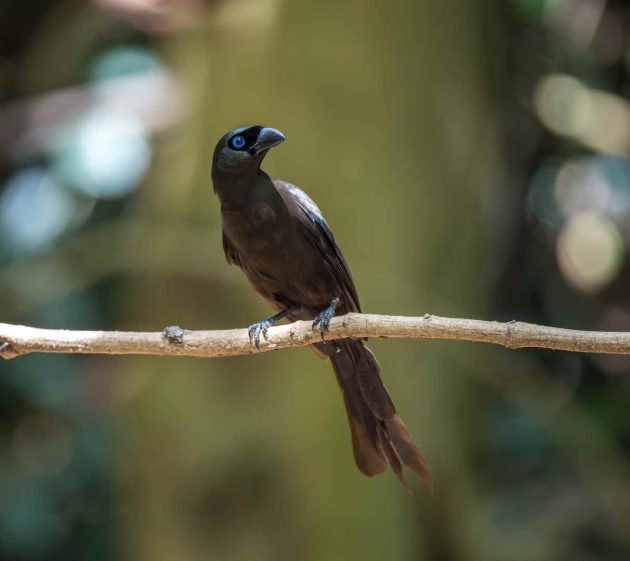
While waiting for new species to appear, it was also fun to see a White-rumped Shama chick begging for food. As usual, a sight that made me feel glad not to have children.
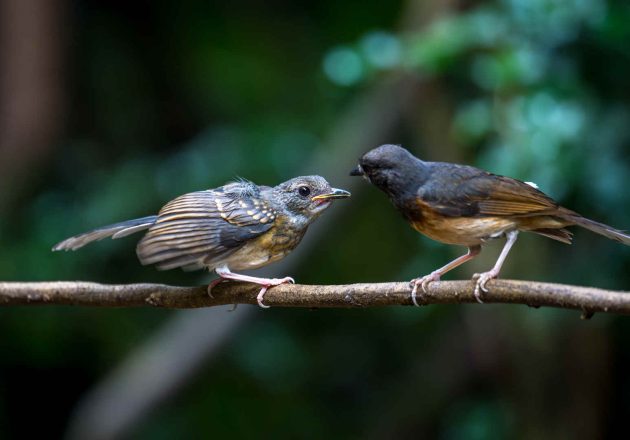
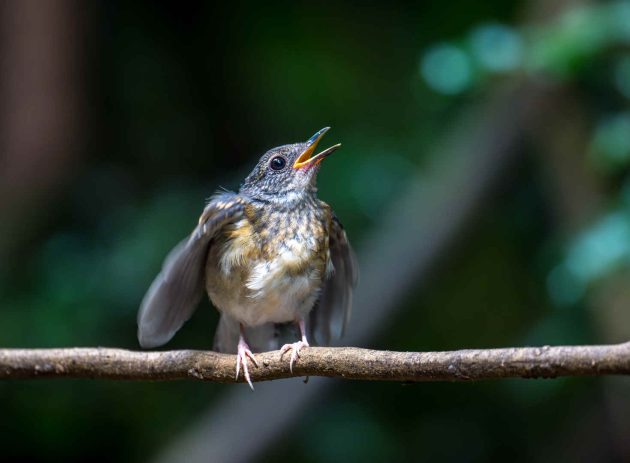
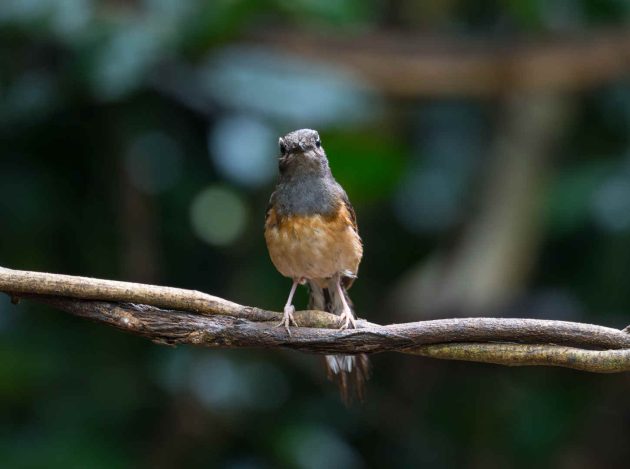
Finally, some of the hide visitors presumably do not just come for the birds but also for a mammal, specifically, a mouse deer. But while cute, it is still just a mammal.
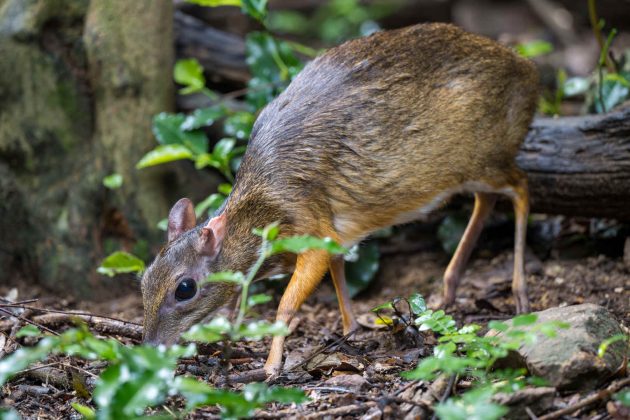
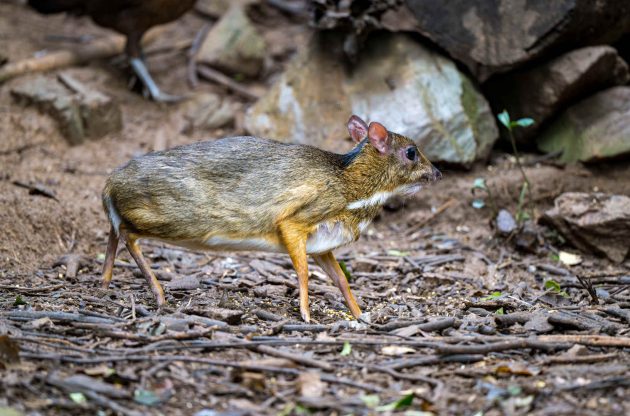
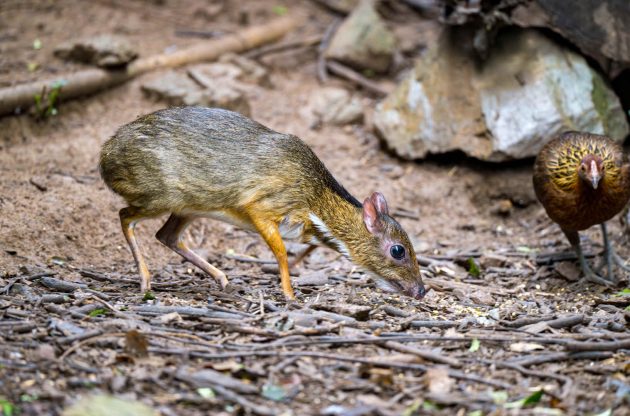





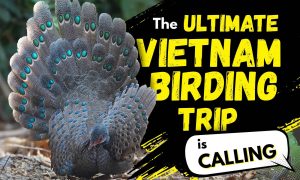
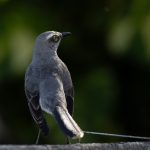


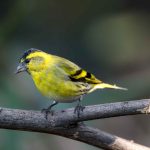

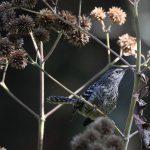
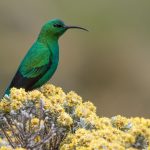
Brown, the favourite colour of mammals!
And Nazis.
Wait, Nazis are mammals. So, my comment was redundant.